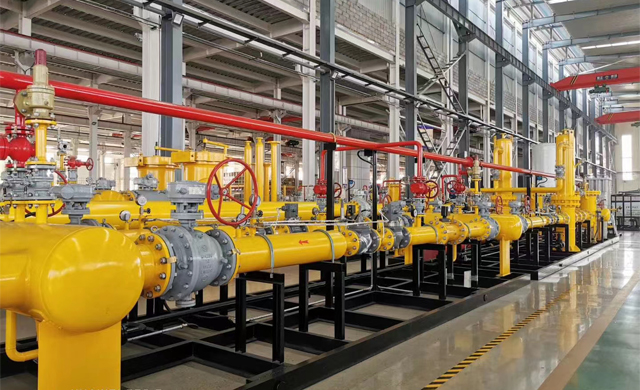
Dec . 27, 2024 22:26
Back to list
gas pressure reducing valve
Gas Pressure Reducing Valve An Essential Component in Gas Systems
In the modern world, the efficient and safe handling of gases is crucial across various industries, ranging from oil and gas to pharmaceuticals and food production. A critical component in these systems is the gas pressure reducing valve (PRV), which plays a vital role in ensuring the stable operation and safety of gas delivery systems. This article will explore the function, importance, and applications of gas pressure reducing valves.
What is a Gas Pressure Reducing Valve?
A gas pressure reducing valve is a mechanical device used to control and maintain the pressure of gas within a specific range. By reducing the high pressure of incoming gas to a desired lower pressure, PRVs ensure that gas can be safely used in various applications without risking damage to machines, appliances, or piping systems. These valves function dynamically, adjusting to changes in gas pressure while maintaining a consistent downstream pressure for equipment and end-users.
How Does a Gas Pressure Reducing Valve Work?
The working principle of a gas pressure reducing valve is relatively straightforward. The valve typically consists of an inlet port for high-pressure gas, an outlet port for low-pressure gas, and a diaphragm that responds to changes in pressure. When high-pressure gas enters the valve, it acts on the diaphragm, which in turn adjusts the valve opening to reduce the pressure to a predefined level.
Most PRVs are equipped with an adjustable spring mechanism that allows operators to set the desired outlet pressure. As the flow of gas increases or decreases, the diaphragm and spring mechanism work together to continuously regulate the gas pressure, ensuring it remains within the desired parameters regardless of variations in inlet pressure or demand downstream.
Importance of Gas Pressure Reducing Valves
1. Safety One of the primary reasons PRVs are critical in gas systems is safety. High-pressure gas can pose significant hazards, including leaks, explosions, and equipment failure. By reducing and controlling pressure, PRVs minimize these risks, protecting both personnel and infrastructure.
2. Equipment Protection Many appliances and machinery are designed to operate at specific pressures. Using gas at improper pressures can lead to equipment damage or failure. A gas pressure reducing valve ensures that equipment receives gas at the appropriate pressure, prolonging its lifespan and improving efficiency.
gas pressure reducing valve

3. Regulatory Compliance Many industries are subject to strict regulatory requirements regarding the handling and distribution of gases. Installing PRVs aids in compliance by ensuring that gas systems operate within safe and legal pressure ranges.
4. Operational Efficiency By maintaining consistent pressure, PRVs allow for more predictable and efficient system operations. This can lead to improved performance and lower operational costs in industrial applications, as processes can run smoothly without interruptions due to pressure fluctuations.
Applications of Gas Pressure Reducing Valves
Gas pressure reducing valves find applications in numerous sectors
- Residential and Commercial Heating Systems PRVs regulate natural gas pressure for stoves, furnaces, and heaters, ensuring reliable performance and safety in homes and buildings.
- Industrial Processes Many manufacturing processes require specific gas pressures for optimal operation. PRVs are used in chemical production, food processing, and more to maintain desired conditions.
- Power Generation In power plants, PRVs manage the pressure of fuel gases to turbines and boilers, ensuring efficient energy production.
- Healthcare In medical facilities, PRVs regulate the supply of gases such as oxygen or nitrous oxide, providing safe and controlled environments for patient care.
Conclusion
Gas pressure reducing valves are vital components in ensuring the safe and efficient use of gas across numerous applications. By providing a reliable means of controlling gas pressure, these valves contribute significantly to operational safety, equipment longevity, and regulatory compliance. As industries continue to rely on gas for various processes, the importance of PRVs will only grow, underscoring their role in modern gas systems. Understanding the function and applications of gas pressure reducing valves is essential for professionals working in fields that involve gas handling and management.
Next:
Latest news
-
Safety Valve Spring-Loaded Design Overpressure ProtectionNewsJul.25,2025
-
Precision Voltage Regulator AC5 Accuracy Grade PerformanceNewsJul.25,2025
-
Natural Gas Pressure Regulating Skid Industrial Pipeline ApplicationsNewsJul.25,2025
-
Natural Gas Filter Stainless Steel Mesh Element DesignNewsJul.25,2025
-
Gas Pressure Regulator Valve Direct-Acting Spring-Loaded DesignNewsJul.25,2025
-
Decompression Equipment Multi-Stage Heat Exchange System DesignNewsJul.25,2025

